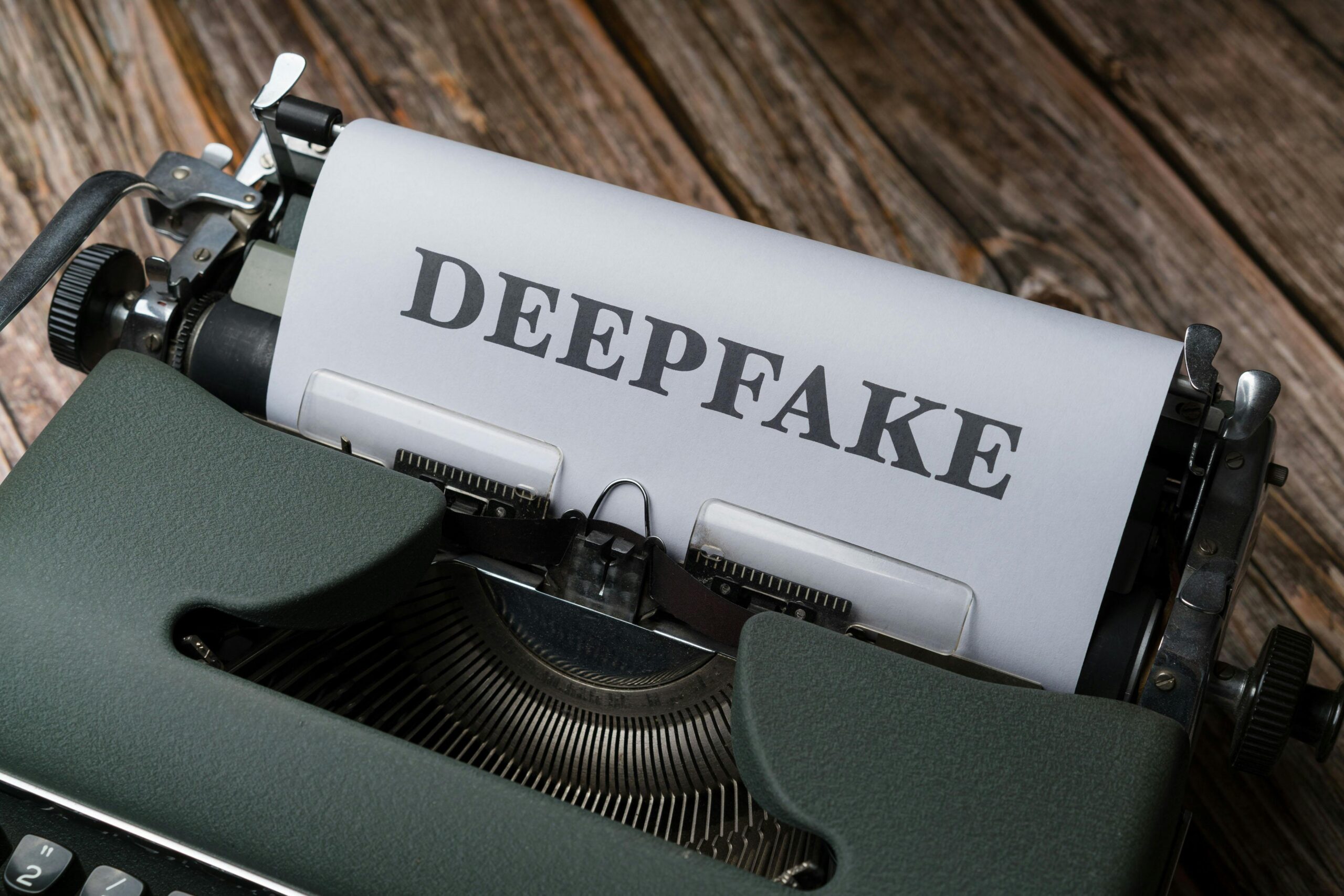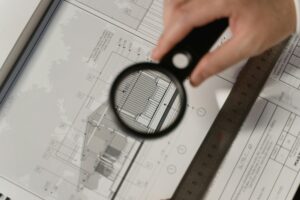How Deepfake Technology is used in Misinformation
Introduction: The Rise of Digital Illusions
What Are Deepfakes?
-
Deepfake is a high definition, artificially created audio or video by using AI to cause an individual to seemingly speak or act in a particular manner that they never did. To simulate faces, voices, and motions in an unreal manner, they employ deep learning approaches, specifically GANs (Generative Adversarial Networks). To start with, deepfake was a novelty, a light-hearted cut-up on Nicolas Cage in an old movie, a funny voice-over. However, events soon went out of hand. Deepfakes are now being created:
-
Political propaganda
-
Revenge porn
-
Financial fraud
-
Celebrity scams
-
Disinformation campaigns
In short, what was once entertainment has turned into a weapon of mass deception.
The Positive Aspect of Deepfakes
Not everything is so dark and dreary. Attributable to most of the technologies, deepfakes can also be good in other cases.
1. Entertainment and Movie The film-makers are employing this deepfake technology to take the faces of actors down in years, to bring long dead characters back to life, or to do the voice-dubbing in many different languages but preserving the lip-sync.
2. History and Education Picture Abraham Lincoln giving the Gettysburg Address in his natural voice – through the recreation of the zap using AI. Synthetic media is being used by museums and educators in order to make history alive.
3. Accessibility AVATARS and voice synthesis could be used to get individuals with impaired speech ability communicate, Or translate the written material in real time to the rest of the world.
4. Customer experience and Marketing Brands are already starting to experiment with avatars that would secure them personal advertisement using AI or the creation of virtual assistants who not only look like the people we trust, but also sound like them.
But power has a responsibility in the other hand and this is where the menace is found.
The Dark Side of deep faces
The boundaries between reality and fake are now not clear as deepfakes become more and more sophisticated. The effects may be disastrous:
1. Political Chaos Doctored clips of politicians uttering inflammatory comments may tilt elections, incite mob violence or even destroy democracy. The consequences of an even short clip can be explosive especially in volatile regions.
2. Personal Attacks Women are some of the common victims of deepfake abuse. Unauthorised imageries of their faces are used in creating synthetic adult content that has gone viral- particularly in social media networks and dark web markets.
3. Corporate Fraud Fraudsters have advanced to the use of voice cloning to obtain CEOs approval of wire transfer of fake amounts. In 2019, an energy company based in the UK was scammed into sending out an amount of 220 thousand euros as the voice on the phone belonged to the boss.
4. Trust Erosion Truth is subjective when you cannot rely on what you hear and what you see. Deepfakes pose a danger to the concept of trust in the digital environment and journalism.
De-Truthification in the AI era
To what limit then do we go?
1. Permitting & Possessing Nobody is allowed to use his/her image without his/her consent. Our faces and voices just like intellectual property need to be given legal protection.
2. Disclosure When the source of the content is artificial (given by AI or non-human logistics) it must carry the indication of this too, and this must be evident in the case of a politician or a product review.
3. AI Regulation It has to be intervened by governments. AI Act of the EU and such bills as the DEEPFAKES Accountability Act by the U.S. authorities are steps towards the right direction. However international collaboration is needed.
4. Media Literacy The society needs to be sensitized on how to doubt what they are reading in the internet. Digital literacy is an important part of the curricula, which should be taught, particularly, in school.
5. Detection Tools Artificial Intelligence has to battle AI. Silicon giants such as Google, Meta and Microsoft are working on deepfake detection technology that can identify fake material through pixel inconsistencies, face asymmetry, and movement anomalies.
Platforms & Tech Company Role
The media by which deepfakes are propagated is the same media in which they can be enabled, tech carrier platforms such as YouTube, X (Twitter), Instagram, and TikTok. It is their obligation to:
- Mark or remove abusive synthetic materials
- Encourage the AI-generated media to be inclusive of watermarking
- Allow the user to report deepfakes
- Bet on real time detection algorithms
Doing nothing would enforce only the spread of mistrust towards online services even more, where this mistrust can soon start turning into real-life violence and lawlessness.
Can AI be Trusted Still?
There is a twist to AI. It is already producing brilliant efficiencies and ground-breaking breakthroughs – and truth decay as has never been seen before.
It is a sad thing to consider: In a world of fake news created by AI, truth will be a luxury. It is conceivable that the accusation of certain action becomes on the accused person to prove that he or she did not do something that a deepfake demonstrates.
We are moving into a world where one does not see and believe anymore. And that makes it risky.
A Human-AI Collaborative Relationship: The Line in the Sand
It is not a question of eliminating deepfakes entirely, which is not feasible and not even desirable. Rather we have to come with a new digital code of ethics with three pillars:
Transparency
Reveal the applications of AI. Label synthetic material.
Accountability
Place owners of illicit deepfakes on the hook. Write legislations to defend victims.
Guardrail innovation
Embrace AI innovation though under a system where the truth, privacy, and consent are highly valued.
Psychology of deepfakes: The reason behind their effectiveness
The fact that deepfakes can so easily slip by our critical thoughts is one of the most disturbing things about them. Why? Due to the fact, people are visual. We are genetically-built to believe our eyes and ears especially when they are uttered by someone you know.
The psychological data indicate that visually supported evidence is more convincing as compared to written or second hand testimony. When a deepfake video is well crafted, the viewer can be overridden by reason. This can affect beliefs even when a person knows a broadcast is untrue, since it can cause the shock of perceived public approval of a disturbing thing or statement.
That is why deepfakes are a perfect tool when it comes to misinformation since the objective is not to prove that something is true but to cast doubt, bring in confusion, and divide. Once that seed of doubt is sown, chances are gone that the damage can be undone.
The Weaponization of Deepfakes in Geopolitics
We live in an era where information is more powerful than bombs. That’s why countries around the world are now investing in information warfare — and deepfakes are a powerful tool in that arsenal.
Election Interference
Imagine a deepfake of a candidate engaging in criminal behavior released just days before an election. Even if it’s debunked later, the impact could already be catastrophic. Voter opinions might shift, trust may erode, and social unrest could follow.
False Flag Operations
An adversary could release a deepfake of a military leader threatening war, or fake footage of attacks, leading to retaliation or panic. In a world on edge, this could mean real casualties based on lies.
Diplomatic Disruption
One believable video of a president insulting another country could damage international relations, affect trade deals, or spark diplomatic breakdowns.
This is not science fiction — it’s an increasingly plausible scenario. The line between digital manipulation and real-world consequences is razor-thin.
The Corporate World: Trust, Reputation and Deepfakes
Governments are not safe than businesses. Companies can in actual sense be more susceptible to deepfake attacks due to the extent to which they have embraced digital communication.
Spurious Executive Orders
The voice deepfakes have already been used by scammers as they impersonated CEOs and made employees transfer money. In the busy corporate environment, such scams can be outright convincing and are very hard to tell in real-time.
Manipulation in Stock Market
Think about a deepfake of a company CEO saying that the organization went bankrupt or engaged in some huge scandal – put out mere moments before the market opens. A small duration of credence might cause enormous sell-off at the expense of investors and reputation.
Brand Sabotage
Malicious actors or competitors might also produce fake videos in which executives make some unpleasant remarks, which might result in boycotts, lawsuits, and irreversible reputational damage.
That is why deepfake detection and awareness training have been becoming part of the arsenals of cybersecurity teams.
The problem of law and ethics
The legal framework is finding it difficult to catch up with the phenomenon of deep fakes. The majority of countries have laws that are outdated and cannot be used to deal with synthetic media in particular. The lack of understanding and enforcement of the law leaves creators and victims with no protection.
Questions that the Laws Need to Answer:
- Who will be responsible in case someone is hurt by a deepfake, its creator, distributor, or platform?
- Does one have the ability to copyright his or her face and voice?
- What is considered satire or parody as opposed to ill intent?
- In the age of ideal forgery how do we establish identity?
In the U.S., such laws are already being introduced, such as the DEEPFAKES Accountability Act, which contain provisions requiring watermarking and disclosure, although these are not enforced widely. China has also introduced a number of rules that require verification of identities using real names and the tagging of synthetic media. However, in the rest of the world, the law is not up-to-date yet.
As long as there is no universal legal agreement, numerous victims of deepfakes will lack a clear way in which they can find justice.
Tooling and Techniques to Fight Deepfakes
Luckily, not only deepfakes are generated by AI but they can also be detected by AI. Here’s how:
1. Deepfake Detection Algorithms
This type of tools examines micro-expressions, abnormal blink behaviors, pixel deviations, or compression artifacts monitoring fake videos. Examples include Video Authenticator produced by Microsoft, AI image scanners offered by Meta, and Deepware Scanner.
2. Blockchain to Authenticity
With blockchain, original videos can be time stamped and watermarked at their source. Initiatives such as Content Authenticity Initiative (promoted by Twitter and NYT etc.) are trying to trace the digital content to its source and also to its deployment point.
3. Digital Watermarking
Placing tags which are invisible in videos or audio will aid in tracking the authenticity. A video with no watermark can be marked as shady.
4. Reverse Image and Audio Search
The new platforms are those that help the user test to know whether an image, video, or audio has been tampered with, cloned, or stolen elsewhere.
This is a game of cat and mouse though. The detection tools become more sophisticated and this would increase the methods to bypass the tools as well. The fake and real arms race goes on.
The Human Firewall: Education and Awareness
What You Can Do:
- Check, double check, triple check: Before you re-post a viral piece, you must ensure the presence of reputable source.
- Check websites that fact-check such as Snopes, Alt News or AFP Fact Check.
- Train other people, mostly the elderly and the young, who are the most vulnerable to digital manipulation.
- You have to look out: unrealistic skin textures, shaking head, bad lighting or sound and video synch.
Is Deepfake Creation a Crime?
It is a fine question. Making all the deepfakes creation criminal might hamper creativity and innovation. Of course, a good deal of deepfakes are created in the cause of humor, fun, or free satire.
Rather, intent and impact matters. Laws ought to aim:
- Adult non-consensual content
- Political misinformation
- Synthetic media that are used as financial frauds
- Deepfake Harassment or defamation with deepfakes
This is a subtle solution because we do not want to get rid of the baby with the bathwater, just to save lives, since there is also the freedom of expression.
What can be the Future of Deepfakes?
The phenomenon of deepfake promises to increase not only in size but with even more advanced techniques. The near future seems to be predictable as follows:
1. Real-Time Deepfakes
It now has the capability of real-time production of fake video and audio with AI models and allows impersonation on live calls, on Zoom, and online broadcasts.
2. Tools Futurization
The same way that everyone can do photo editing, everyone will be able to create a deepfake. There are already free applications and open sourced models, the latter will get even easier.
3. Virtual Influencers and AI celebrities
The brands will soon make use of deepfake tech to create virtual personas. Possibly, in the future, we will have whole albums of music, podcasts, or vlogs created by artificial influencers.
4. Zero-Trust Society
When deepfakes become indistinguishable with the truth, the society may evolve to a new state of default-skepticism: nothing can be believed and no information can be accepted unless proven on the blockchain or by the authorities.
The loss of trust may be the greatest long-term hazard.
Drawing the Line: The responsibility of all People:
Well, how far do we extend this to?
At consent. At harm. At truth.
We have to accept the opportunities of synthetic media but within limits. This implies legislations that secure citizens, platforms that assume responsibility, and users who think.
- It is a mutual problem, and we should contribute to it:
- There is need to have governance regulation.
- Developers need to be responsible in their constructions.
- The media needs to check.
- Users have to doubt.
Then alone can we avoid this hazty ground, without losing our footing.
Concluding ideas:
conclusion:
Short FAQs:
Q1. What is deepfake?
Deepfake is an artificially intelligent media used to make individuals say or do something which they did not say or do.
Q2. Is deep fake a threat?
Sure, it may be misused, it can be employed to conduct misinformation, it can be employed to conduct fraud and even harassment, both in politics and in personal life.
Q3. Is it possible to detect deepfakes?
Yes, with the aid of AI that can examine the incongruencies within video or sound, yet it is a video game chase against creation tech.
Q4. What then can be done to guard against malevolent deepfakes?
By use of regulation, media literacy, watermarking and and improved AI detection.
Q5. Is Deepfake Content evil?
Not necessarily. One can employ it ethically in films, education, accessibility and entertainment.






